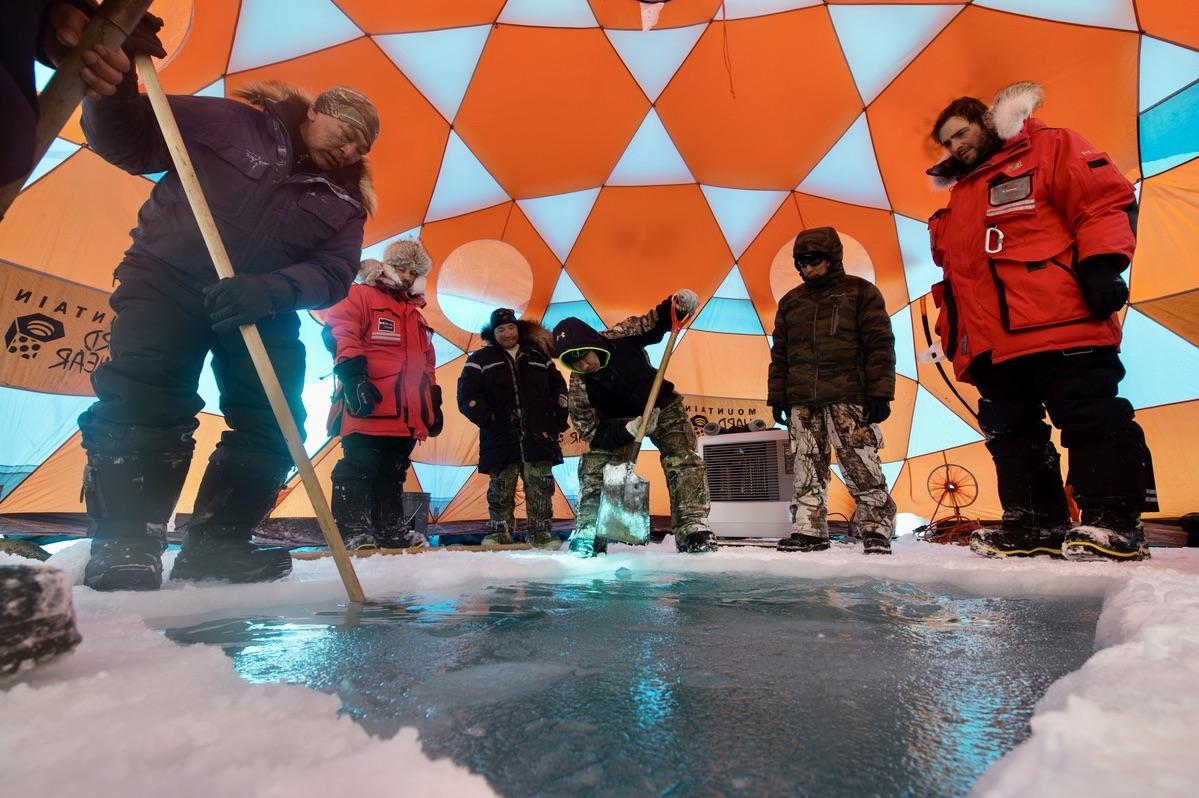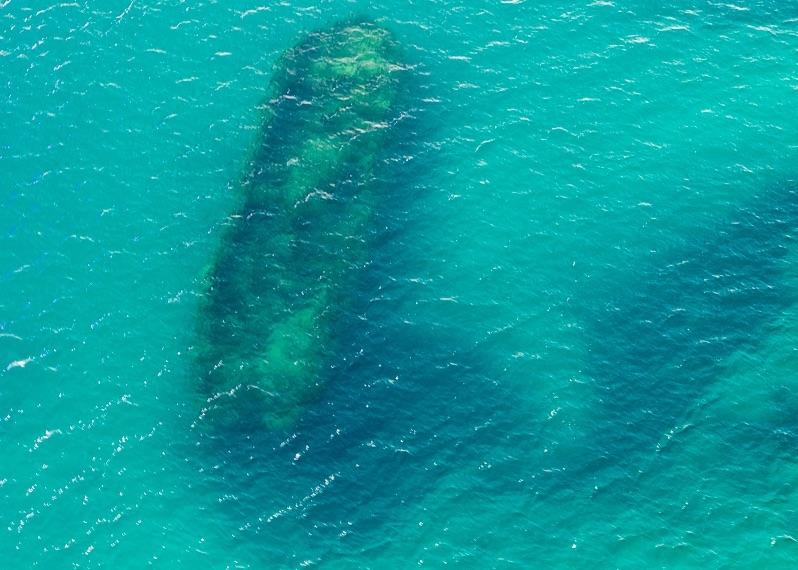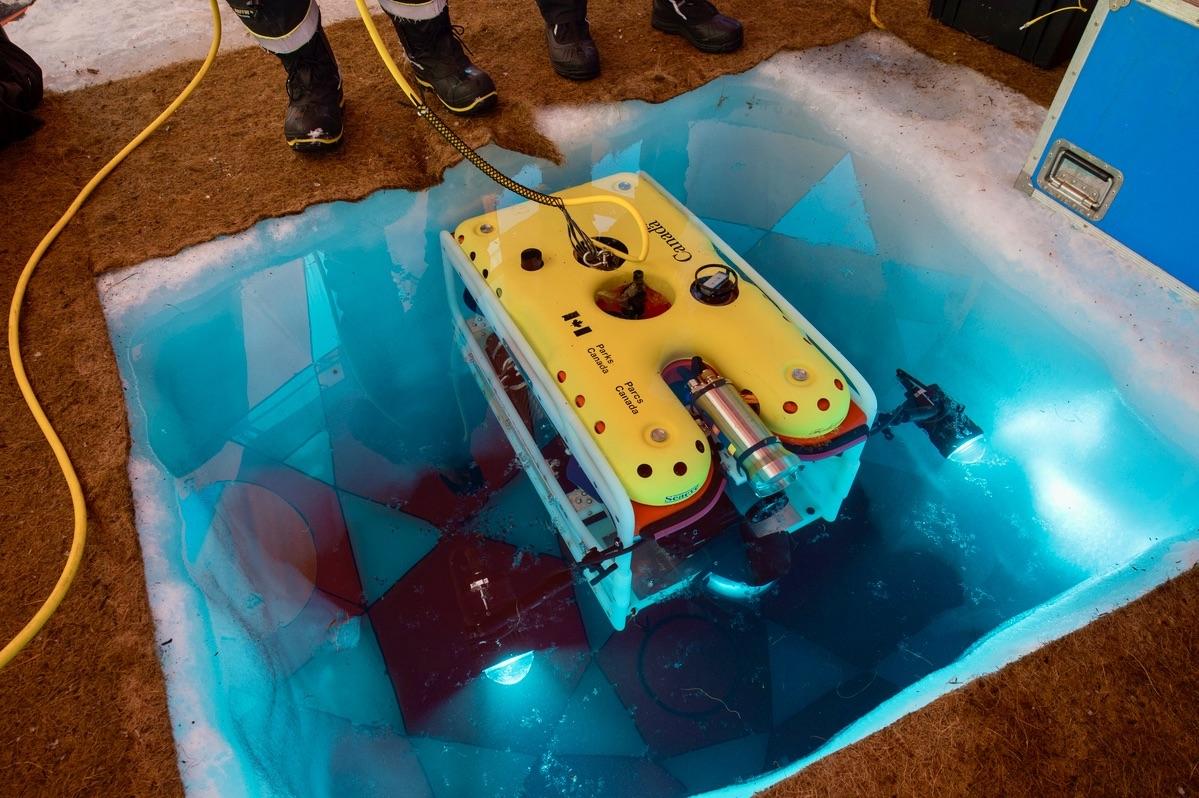
Collaborative research is done at the Wreck of HMS Terror/Parks Canada, Thierry Boyer
After two years of pandemic delays, Parks Canada's Underwater Archaeology Team has returned to the Wrecks of HMS Erebus and HMS Terror National Historic Site in Nunavut to conduct archaeological work related to the exploration and conservation of these fabled ships.
The team will deploy state-of-the-art remotely operated vehicles (ROVs) for under-the-ice inspections of the sites and surrounding sea floor. The dives will be carried out with the logistical support of Inuit Guardians, who help integrate Inuit knowledge into protecting and monitoring site operations. Dives will record and map the sites and allow archaeologists to assess the condition of the wrecks.
During a second expedition slated for later this summer, the team plans a series of dives at Erebus to continue the exploration, documentation and excavation of the site. It expects to continue archaeological diving research at the Terror wreck, including additional interior ROV recording. Planned research will also be conducted in collaboration with the Inuit Guardians.
In supporting this research season, the federal government is delivering on the commitment made in Budget 2021 to accelerate archaeological and conservation work at the Franklin Expedition sites. That budget provided $15 million ($11.7 million USD) over three years, starting in 2021-22, to support and accelerate archeological and conservation work of these sites.
“Working together with our Inuit partners, this research will also further our understanding of how to protect these sites, and the precious environment in which they are located, against the impact of climate change,” Steven Guilbeault, Minister of Environment and Climate Change and Minister responsible for Parks Canada, said in a news release. “We all look forward to finding out what this year's research will uncover.”

The Erebus wreck on a clear day in Nunavut/Parks Canada, Thierry Boyer
Fred Pedersen, chair of the Franklin Interim Advisory Committee, said that due to COVID there has been no work performed at the wreck sites for the past two years.
“It will be important to see if any damage has occurred at Erebus as that wreck site is in relatively shallow waters,” he said in a written statement. “We are excited to see what Terror may be able to show us as that wreck site is in remarkable shape and this field season should allow the divers to have a better look as more time can be devoted once the moorings for the dive platform are set in place.”
Franklin set sail from England in 1845 with two ships, HMS Erebus and HMS Terror, in search of a Northwest Passage across what is now Canada's Arctic. The ships and crew were last seen by Inuit on King William Island. Their apparent disappearance, prompted 170 years of searches. In September 2014, an expedition led by Parks Canada discovered the wreck of Erebus in an area that had been identified by Inuit. Two years later the wreck of Terror was located.
The Wrecks of HMS Erebus and HMS Terror is the first collaboratively managed national historic site in Nunavut.

Research gear at the Terror wreck site/Parks Canada, Thierry Boyer
Formed in 2016, the Franklin Interim Advisory Committee — comprised of community members and representatives from the Kitikmeot Inuit Association (KIA), Inuit Heritage Trust, Government of Nunavut, the heritage and tourism industry and Parks Canada — advises on the management of the wrecks until an Inuit Impact and Benefit Agreement is finalized between Parks Canada and the KIA.
Since 2017, a Guardian program has been in operation at the wreck sites. Inuit from Gjoa Haven protect and monitor the Franklin wrecks and help integrate Inuit knowledge into Parks Canada’s operations and management of the national historic site.
Since 2018, all newly discovered artifacts are jointly-owned by the federal government and Inuit. In April 2019, the government and Inuit Heritage Trust signed a Memorandum of Understanding detailing how the two organizations will work together to protect, study, conserve and share the Franklin artifacts.
In August 2019, Parks Canada released video footage of Terror as part of one of the largest, most complex underwater archaeological undertakings in Canadian history. The Underwater Archaeology Team, in collaboration with Inuit, have recovered more than 350 artifacts from Erebus.



Add comment